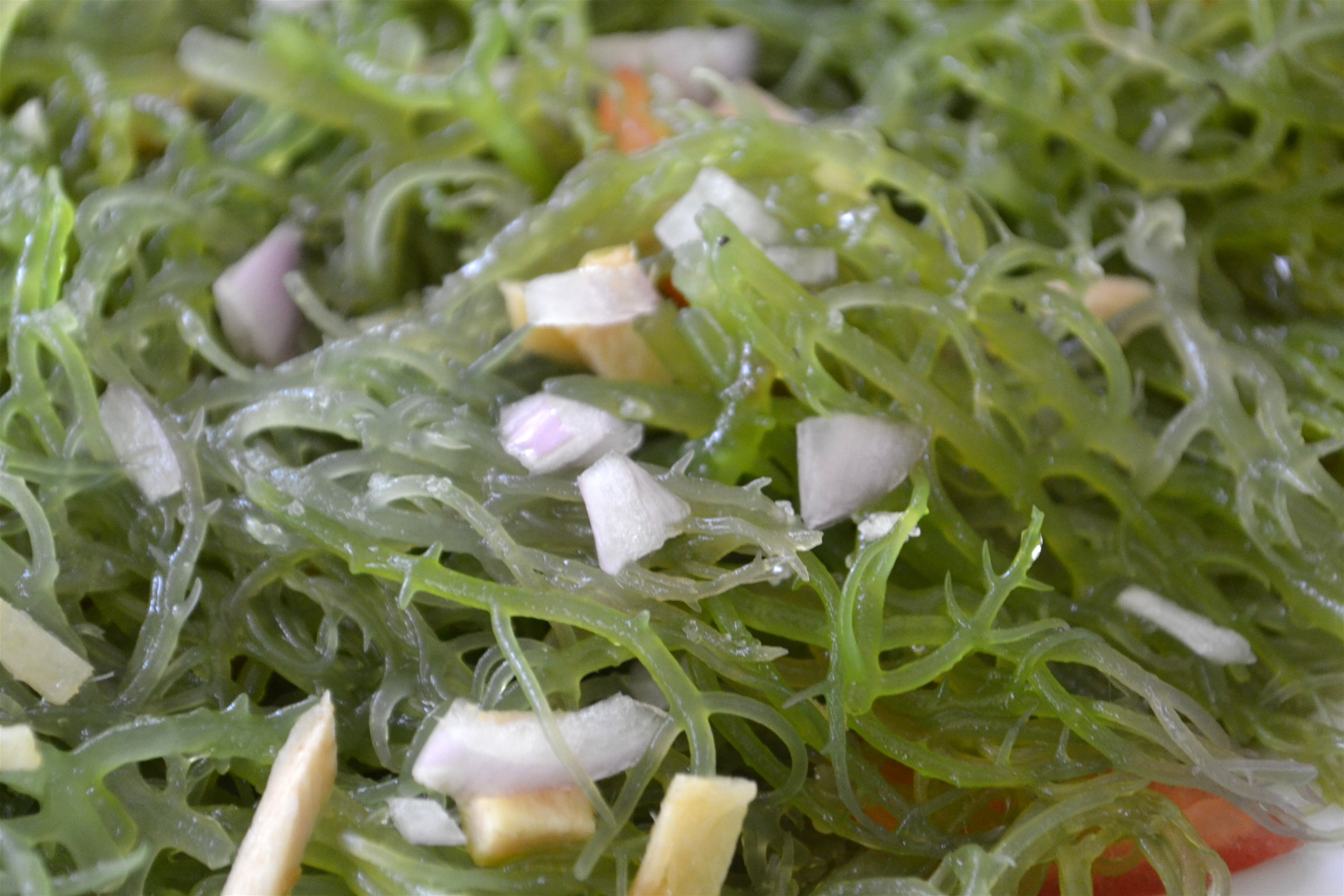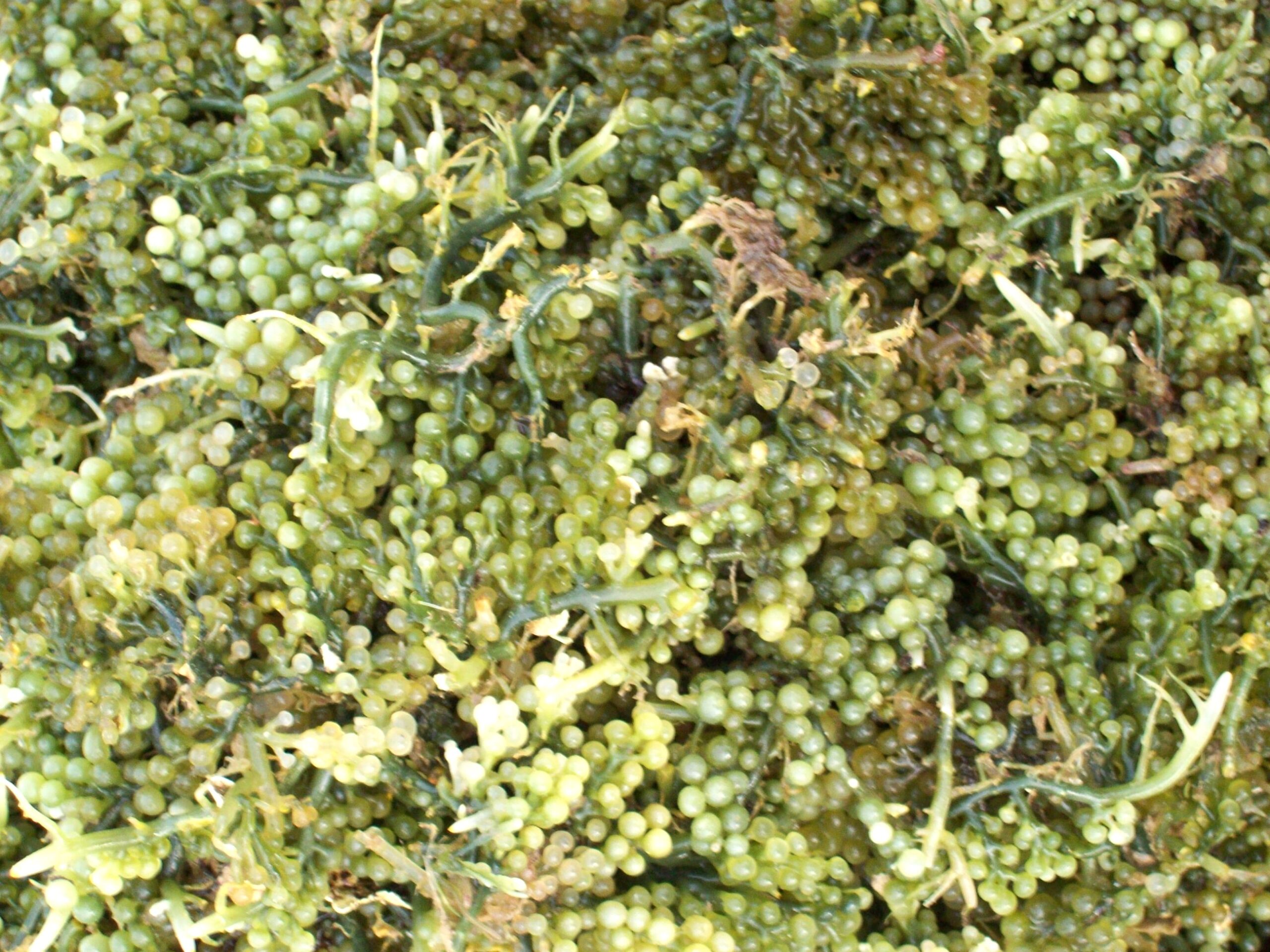Text and Photos by Henrylito D. Tacio
By culturing seaweeds, people living near the coastal areas can have another source of income. Instead of relying mostly on the catch in the open seas, women and children of fishermen can grow the “multicellular” forms of algae near the seashores.
Filipinos are familiar with seaweeds as the lead or supporting ingredients of some forms of salad. Unknowingly, the underwater goldmine, as they are called, can also be converted into organic fertilizer, which would help address food shortage as farmers can no longer afford the prohibitive cost of commercial fertilizer.
Emmanuel Piñol, former agriculture secretary who is running for the senate this coming May election, said the country imports 2.82-million metric tons of chemical fertilizer every year. At the current market prices, that “would be worth P300-billion.”
“The option is to rediscover natural plant nutrition formulation,” Piñol suggested, “and seaweeds become urgent in the face of a worldwide fertilizer shortage which could result in low agricultural production and widespread famine.”
As such, he urged the government to boost the organic seaweeds fertilizer program. “We have a distinct advantage with a total coastline of 36,298 kilometers, and seaweeds are now produced mainly in Mindanao, Bicol, Palawan, and Mindoro, making the Philippines the third biggest producer of seaweeds after China and Indonesia,” said Piñol, who was also the former head of Mindanao Development Authority.
Piñol reported that there are already commercially available seaweed-based fertilizers, “but these are mostly processed by small groups of organic farmers who barely receive support from the government.”
He cited the case of the Southern Philippines Agribusiness and Marine and Aquatic School of Technology (SPAMAST), which has developed a natural fertilizer derived from the drippings of a particular seaweed called Kappaphycus alvarezil.
The natural fertilizer which SPAMAST developed is commercially available as Kappaphycus Drippings or KD Foliar Fertilizer, which could increase the yield of rice, baby corn, soybean, mung bean, sweet pepper, cauliflower, mango, pechay, and orchid.
“A kilo of Kappaphycus seaweed can yield up to 650ml liquid fertilizer,” SPAMAST said in a report. “It contains nutrients that contribute to soil fertility,” particularly NPK (nitrogen, phosphorus, and potassium) but also magnesium, copper, zinc, iron, and manganese.
“Most of these accounts are merely anecdotal with very little attempt to establish accurate nutrient measurements like in commercial inorganic complete fertilizer which carries 16-16-16 of NPK,” Piñol admitted.
The former agriculture secretary believed the biggest challenge in exploiting the potential billion-peso industry, which could also address poverty levels in the coastal communities, is the lack of cohesive effort on the part of the government.
“The research, for example is done either by the Department of Science and Technology or institutions like SPAMAST, the regulation is handled by the Fertilizer and Pesticide Authority while the Department of Agriculture hardly promotes the use of locally-formulated natural fertilizers,” Piñol deplored.


As such, he suggested a legislated national program focusing on coordinated and well-funded research and development, financing for production, and promotion of seaweed-based natural fertilizers.
Indeed, there is so much potential for seaweed-based natural fertilizers. This is particularly true in the case of rice production. This is good news as rice is the staple food of Filipinos, consuming 114-120 kilograms of rice per capita per year on average.
Scientists from the National Crop Protection Center (NCPC) at the University of the Philippines Los Baños conducted thorough research on the ordinary seaweed (carrageenan) and employed innovative technology, and the result was simply amazing – boosting rice yield by more than 65%.
“Carrageenan is an indigestible carbohydrate (polysaccharide) extracted from edible seaweeds,” said the Philippine Council for Agriculture Aquatic and Natural Resources Research and Development (PCAARRD) which funded the study.
“To those unfamiliar with its many uses, seaweed is commonly used as a thickener or stabilizer by the food industry and also used as a binding agent for domestic products such as toothpaste and shampoo and are found in selected pharmaceutical products.
Some studies showed that when polysaccharide or carbohydrate is degraded or reduced to tiny sizes by a safe technology process called irradiation, it can be an effective growth promoter and makes rice resistant to major pests. In fact, at very small doses, it is an effective organic fertilizer.
“Carrageenan as a growth enhancer offers an array of benefits that result in improved productivity,” the PCAARRD said. “Used properly as prescribed, it makes the rice stem stronger thus improving rice resistance to lodging. It also promotes resistance to rice tungro virus and bacterial leaf blight therefore giving farmers increased harvest.”
What is good in this seaweed additive is that it is compatible with the traditional practice of fertilizer application, thereby allowing easy acceptance and less resistance from farmers. It also promotes sustainable agriculture since it is environment-friendly and enhances the presence of natural enemies that fight major pests in rice fields.
More importantly, it promotes more efficient absorption of plant nutrients that enables improved growth.
In a field trial conducted in Bulacan by the research team using carrageenan, rice yield was significantly increased by 63.6 to 65.4%. This treatment provided higher grain weight (of 450 grams and 455 grams, respectively) compared to traditional farmers’ practice of applying nine (9) bags of fertilizer per hectare that yielded only 275 grams.
Application of six bags of fertilizer per hectare plus 200 parts per million (or 20 milliliters) of carrageenan is more or less comparable with the application of just three bags of fertilizer per hectare with the same mixture.
But it’s not food production that will benefit much from seaweeds. Commercially, seaweeds are valued for their colloids or gluey substance, particularly agar, carrageenan, and algin. Both agar and carrageenan are extracted from red seaweeds, while algin is extracted from brown seaweeds.
Agar, which derived its name from the Malay word for seaweed, “agar-agar,” is used in making jellied desserts, as a stabilizer in pie fillings, piping gels, icings, cookies, cream shells, and as a thickening and gelling agent in poultry, fish and meat canning.
In the medical and pharmaceutical industries, agar serves as a laxative, suspending agent for barium sulfate in radiology, ingredient for slow-release capsules and in suppositories and surgical lubricants, and as a disintegrating agent in tablets. It is also used as impression materials to make accurate casts in prosthetic dentistry, criminology, and tool manufacturing.
Carrageenan, on the other hand, is used in making ointments, as a stabilizing agent in frozen dairy products, as an emulsifying agent in water-insoluble drugs and herbicides, and as a texturing agent in toothpaste and powder. The Philippines is the world’s top carrageenan exporter.
Algin or alginic acid, meanwhile, is used as another stabilizing agent for several food products, as a sizing agent in paper manufacture, and as a thickening agent in print pastes and painting coatings.
According to the Food and Agriculture Organization (FAO), commercial production of seaweeds through farming is at present limited to a few countries in East Asia, making it a high-value crop with high demand in the world market. The Philippines is noted for the culture of seaweeds along with Japan, China, Korea, and Taiwan.
The Philippines is home to various kinds of seaweeds, of which 390 species have been identified as having economic value as food, animal feeds, fertilizers, diet supplement, medicines, and raw materials for industrial products.
Dr. Rafael D. Guerrero III, former head of the Philippine Council for Aquatic and Marine Research and Development, is hopeful that the country could develop a sustainable production of seaweeds and a viable industry.
“Seaweeds require low inputs with high returns on investment,” he pointed out. “It is labor intensive and offers good opportunities for the employment of the otherwise labor force in the coastal areas.”

